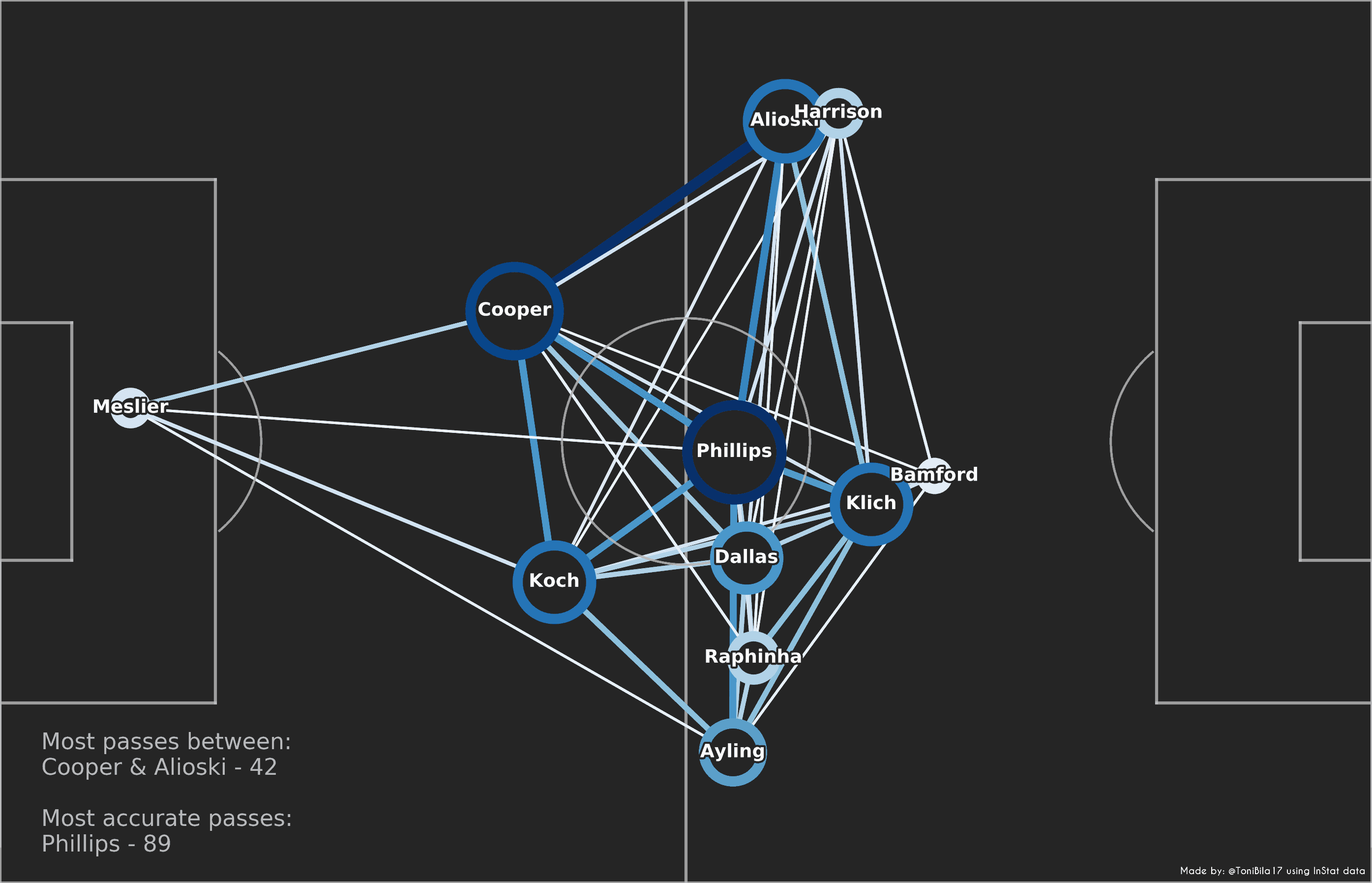On Sunday afternoon Leeds faced Arsenal at home and dominated the whole match. Leeds had 25 shot attempts compared to the nine Arsenal attempted. Leeds were unlucky because they hit the woodwork three times yet still failed to score. Poor finishing let them down in this match, but there were many positives to be found in their performance. In the following image we can see their passing network from the match. Bigger circles represent more passes by a player and a thicker line represents more passes between the two players it connects.

Knowing that Arsenal are a team who tend to dominate possession in most matches is a testament to how well Bielsa prepared his team. Leeds had 66% of the possession with 600+ passes. Once again the focal figure of their build-up was Phillips. He had 89 accurate passes which was the most by any player in this match. Cooper and Alioski had the highest number of passes between any two players. Alioski had a great match and was one of the best players on the pitch. The visualisation also shows how close Klich was to Bamford in relation to his average position, yet had a larger number of passes and links compared to Bamford. Bamford was less involved in the build-up, but showed good movement which enabled him a few promising chances that he unfortunately missed. Dallas played an important role in their attacks even though he wasn’t as involved as Phillips and Klich. His movements, however, often opened up space for Phillips and Klich to receive the ball.
Conclusion
Based on the passing network it is evident that Leeds relied heavily on attacking through central players. Ayling and Raphina were more involved in central actions compared to Alioski and Harrison who were tasked with providing width on the left side. Cooper and Koch were essential in their build-up and often looked for Phillips or full-backs. Leeds were impressive against Arsenal, but their finishing let them down in this match.






Comments